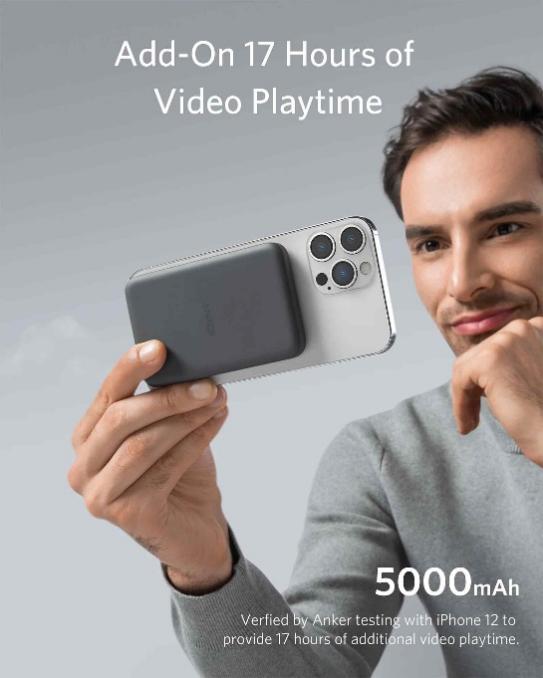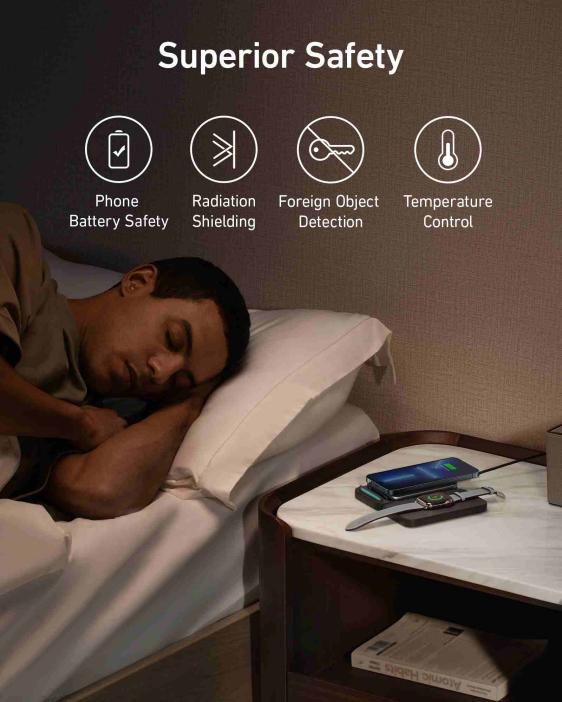If you are thinking about switching from plug-in charging to wireless charging for your mobile phone, you have probably already heard or read about the benefits of wireless charging. Do you have any concerns regarding the accuracy of the claims that have been made regarding wireless charging? We have compiled a list of the most widespread misconceptions regarding wireless charging and responded to each one with the correct information.
Myths About Wireless Charging that You Should Know
Myth #1: Using a wireless charging station poses a risk of causing damage to both the phone and its battery.
Fact: When you use a wireless charger that is of poor quality, the security of your smartphone is put at risk. On certain wireless charging mats, the phone can be protected from damage while it is charging at the same time. Users of the Anker wireless chargers use the device's magnetic alignment, which directs their phone to the appropriate location for charging and helps them avoid dropping their phone while they are fumbling around.
Myth #2: It is risky to continue using your phone while it is charging.
Fact: There is no reason to be concerned if you charge your phone and then leave it on (with the screen turned off) to check for messages or listen to music after it has finished charging. However, when using your phone in scenarios in which it could overheat and be damaged, such as while using applications that require a lot of graphical processing power or when there is not enough ventilation around the device, you should exercise caution when using a wireless charging pad with your phone.

Myth #3: Unofficial chargers have numerous shortcomings that place them in a lower quality category.
Fact: Some third-party, unauthorized wireless charging devices are not guaranteed to be defective in every instance. It is necessary to differentiate between genuine aftermarket chargers and those that are imitations or copies. Even though they are sold under a variety of brand names, certain wireless chargers operate exceptionally well. This is because the manufacturers of these chargers adhere to stringent quality standards, and respected distributors and merchants sell them.
There is no danger to your mobile device if you make use of a wireless charger that is of excellent quality and has been certified, such as the Anker. Nevertheless, there is a significant danger involved in the purchase of counterfeit or low-quality wireless chargers. They are sold by questionable vendors, and it is possible that they were manufactured without any quality assurance tests being performed.
Myth #4: If you leave your phone plugged in overnight, it won't operate in the morning.
Fact: It is general knowledge that smartphones and even wireless charging pads of today are equipped with the intelligence necessary to detect when the gadget that they are powering has reached its maximum level of charge. Because wireless charging pads still emit some heat, you shouldn't leave your phone on one of these pads for an excessively lengthy period. If you leave your phone on the wireless charger for an excessively extended period, there is a risk that it will overheat. If you always keep the charge level on your phone between 40 and 80 percent, you will get the most out of the battery life on your device.

Myth #5: Wireless charging is not compatible with all mobile devices.
Fact: Even if they are Qi-enabled, older phones do not have a receiver that enables them to be charged directly by wireless charging pads or pads that are hooked to a power outlet. This prevents them from being charged wirelessly. This is because wireless charging wasn't readily available when these phones were originally brought to market. However, to enable wireless charging, the back of the phone will need to have third-party hardware, such as a receiver patch, attached to it.
Bottom Line
Debunking some myths regarding wireless charging such as wireless chargers can damage smartphones, using a smartphone while charging is risky, and wireless charging is not compatible with all smartphones is the best way for one to learn more about it. If they are managed and used appropriately, wireless chargers offer both security and convenience. Both the security of your phone and the simplicity with which it can be used depend on how carefully you handle the charger for it. Before you purchase a wireless charging device, it is important to do your research to ensure that it is of a high enough quality to successfully charge your device.











